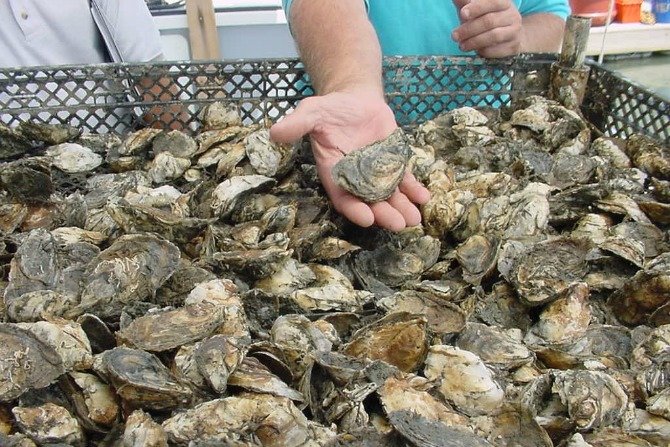A few weeks into the New Year, we have been successfully sticking to our resolution to make small changes in our daily routine to become more eco-friendly and kinder to Mother Earth. We’ve been good so far by recycling and buying as many sustainable food products as we can; however our five minute shower schedule has proved to be more difficult than anticipated. While researching ways to get involved in local ecological events, we stumbled on to some information about an important movement to revive the population of a special shellfish to our shores.
The oyster restoration project has been an active plan of late to increase the number of oysters living in the Chesapeake Bay watershed. This ecological project brought together organizations such as the Army Corps of Engineers, The Chesapeake Bay Foundation, University of Maryland Eastern Shore, the State of Maryland, and the Commonwealth of Virginia to help protect and save our waters from losing our oyster base.
While oysters, and all shellfish for that matter, are not the cutest looking members of the local aquatic community, they are vital to the health of our wildlife and our own future. These little rock mimicking creatures are the best filters for the bay, filtering many of the most harmful pollutants from our water.
A large problem that our waterways encounter is due to an abundance of nitrogen. This comes from human and animal waste, fertilizer, and fossil fuels. When nitrogen seeps into the bay, it is eaten by phytoplankton, which grow into groups of algae, causing large algal blooms. The algae in these blooms suck up oxygen in the water for their own use and also block the sun. As a result, other aquatic plants cannot photosynthesize and produce oxygen.
Believe it or not, our answer to saving the bay may lie with the oysters. Oysters are actually the best filters for nitrogen and also eat the phytoplankton responsible for the algal blooms. As the oyster draws in water and plankton, the mollusk will consume all edible items and then dispel what it cannot eat. Nitrogen is included in this waste and will fall to the ocean floor, where it remains until it rises and once more returns to the atmosphere. It may seem like the oysters didn’t really solve the nitrogen problem and only moved the chemical around, but by storing the nitrogen on the ocean floor, it is no longer active in the environment and thus cannot contribute to algal blooms.
Unfortunately, oysters are not able to clean our water at the same speed as they once did. There were once so many oysters in the bay and its tributaries that the population could filter the entire bay in one week. Today, it can take the oysters up to a year to accomplish this task. As a result of overfishing, habitat loss, and pollution, we have lost many of our oysters, so much so that scientists have said that today’s population of oysters is only 2% of its original size.
However, the restoration project has seen improvements and hopeful signs for a return to large oyster populations. Many restoration operations are occurring in our area because oysters only grow in mixed salinity waterways, such as the Choptank River. In fact the largest oyster restoration project on the East Coast is taking place in Talbot County’s Harris Creek. In the project centers located on these waterways, oysters are bred, raised to adulthood, and then returned to the environment.
In large tanks, oysters carry out their life processes while scientists and volunteers watch the mollusks go through cycles of reproduction and maturity. When oysters reproduce, female and male oysters send gametes into the water, which eventually find each other to create oyster larvae. These creatures, like other young sea life, are termed plankton because of their microscopic size. As they grow older they become spat, which have the appearance of an oyster shell when seen under a microscope. After swimming freely for part of its life, the animal decides to settle down in a stable area and cement itself to its location.
Although the oyster has a shell like shape when the animal is spat, it is up to the oyster to make a hard outer layer for protection. That’s right, oysters actually grow their shells. The oyster filters calcium from the water or a rock structure that it has planted itself on and uses the chemical to make its shell bigger and harder. There is no way of telling how large oysters can grow because if left unharmed, these shellfish will continue to build their shells bigger and bigger for its entire life.
Oysters need hard surfaces such as rocks in order to thrive; if they try to build homes in mud, they will unfortunately suffocate. An oyster’s ideal destination however is on the shell of another oyster. For this reason you can donate oyster shells to the Chesapeake Bay Foundation so that researchers can recycle the shells to create oyster reefs.
Despite major restoration projects, there is still a lot of work to be done to make our waterways healthy again. For example, there are many oyster recycling stations where anyone can drop off their used or found oyster shells, but there are far too few on the Eastern Shore. We hope to dedicate our free time to this effort in hopes that we can play a part in restoring the Shore’s oyster reefs. We hope you’ll join us!









